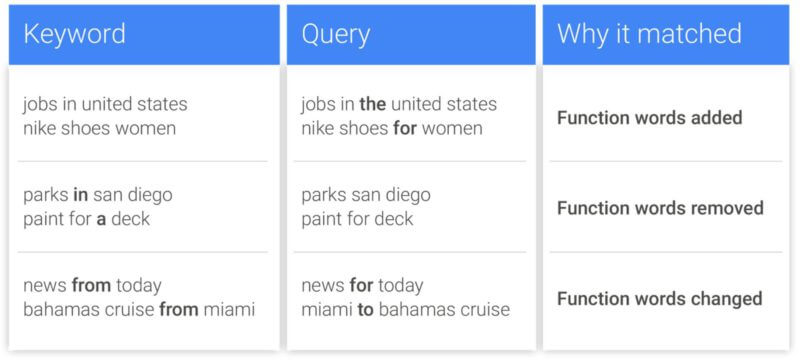On March 17th, Google announced that they will expand their “Close Variant” matching system for Exact Match keywords.
Google is taking away advertiser’s ability to target Exact Match keywords word-for-word. The last major keyword update was AdWords close variant update in 2014. With voice search becoming more and more popular and long tail keywords on the rise, a keyword update was due.
In coming months, we'll help you connect more people with what they’re looking for with exact match close variants: https://t.co/50tSKmIbYF
— Google AdWords (@adwords) March 17, 2017
While this is a major shift, it’s certainly not insurmountable. With proper foresight and planning, every advertiser should be prepared for any changes that may occur within accounts. Individual impact may vary, but below is what the subject-matter experts at Seer anticipate.
What’s Happening?
Matching for close variants [of desired keywords] — plurals, typos, abbreviations, adverbs and so on — will be broadened to include variations in word order and function words in the coming months. With this change, Google may ignore word order and function words when determining whether an ad should trigger for an exact match keyword.

(source: http://searchengineland.com/google-exact-match-close-variants-word-order-function-words-271395)
[Find out which keyword match types you should choose]
What This Means
Exact Match keywords - the ones that we have highlighted as matching searches verbatim - will begin casting a wider net that is less, well, exact. The introduction of this update is a pretty strong indication that Google is confident enough in the progress their machine learning has made over the years that they believe it will be able to identify and differentiate between close variations that are and are not relevant.

The Impact on Marketers
We believe that this will ultimately aid certain campaigns and industries, especially in specific instances where overall volume is low. We could also see a decrease in conversion rate (CVR) or qualified leads generated for some campaigns. Some more specific changes that we might see are:
- Daily budget caps will not change but advertisers can expect to spend more to achieve full impression share
- Keywords that Google considers “Low Search Volume” may see traffic increase
- Impression volume should increase, which may positively or negatively impact click-through rate (CTR)
- Click volume may increase as impressions increase, driving additional traffic to the site
What to Look Out For
Implications from this update could be hitting your account now. According to Google, this update will gradually roll out over the remainder of 2017. So what should you look for in your account?
- Keep a close eye on your impressions, clicks, and CTR for Exact Match keywords. As we mentioned above, this update could increase impressions and clicks, and decrease CTR. If you see these trends occurring in your account with minimal account changes, then this could be a sign the Exact Match update is impacting your account
- Review your Search Term Reports more frequently. These reports are important to determine if your Exact Match keywords are now showing for irrelevant keywords. Use Search Term Reports to add negative keywords to your account to prevent wasted spend
The Future of Keywords
Google’s Exact Match update is another example of AdWords’ shift to natural language targeting that comes with voice search. Long tail search queries are increasing as people get more accustomed to voice search and purchase more AI powered devices (e.g., Amazon Echo, Google Home). Keep in mind, keywords are here to stay. There will always be the need to target people who are actively searching for a product, service or answer, and keyword targeting is one of the most effective way to do so.


